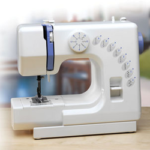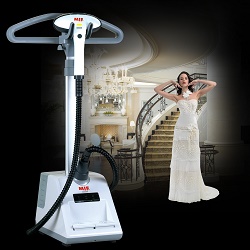Choosing the best thread for overlock
When tailoring a lot of attention should be paid to the thread. The quality of the line will depend on the type of finished product, its long-term and degree of wear. It is sad to see disintegrating loops after the first wash. Especially often the flaws appear precisely in the overlock seams. In order for individually tailored clothes to have an impeccable look while being worn, it is necessary to know which threads for the overlock are best used in work.
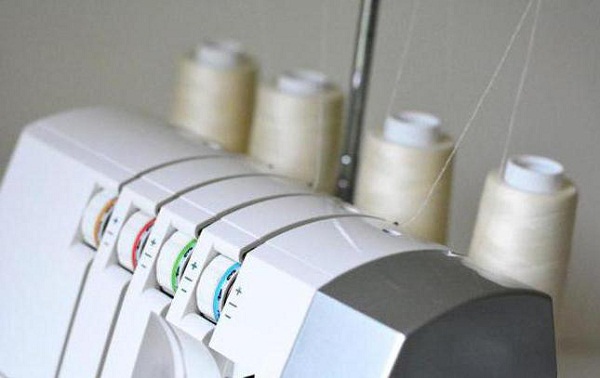
Content
Overlock Thread Requirements
For the overlock, the range of suitable threads is much narrower than for a regular sewing machine, but, nevertheless, the choice must be correct. Whatever good overlock machine and properly adjusted if the thread is not suitable, you can not expect a quality line. There are two important criteria:
- high-quality fiber;
- the thread should be thin.
These requirements are based on the features of the tapering seam. It is a chain of thread. The edges of the product are processed in 3-5 threads, and if it is of standard thickness for sewing with No. 40, the seam will look very rough. Depending on the type of fabric, the thread should be used in sizes from 50 to 120.
For processing the edge of a dense fabric, it is not necessary to choose the thinnest thread, since it can fray on the needle's needle, as well as tear at the intersection of the seams, i.e. in the place of tissue thickening.
From fiber quality yarn depends on the work itself overlock. Choosing a model, especially, well-known brands, it is necessary at the initial stage to inquire which brands of threads will be most suitable. Also an important point when choosing a thread is its appearance. It should be smooth and elastic. Mahra can form nodules, which will lead to obfuscation. The seam will not look aesthetically pleasing.

Given the consumption of overlock material, better use large coilsso that the seam is not interrupted in the open area of the product, and the workflow has fewer interruptions. If the overlock is multifunctional and can perform 3, 4 and 5-thread stitches,It is not necessary to put all the coils for overlock. It is enough to apply them for filling in the loopers, and universal needles can be used in the needles. Such a combination will save the cost of the available material for sewing.
How to make the right choice
Before proceeding to the selection of threads from different manufacturers and determine the colors and thickness of the fiber, it is necessary to determine the scope of their use. When choosing, consider the following questions:
- for what type of clothes the thread is purchased;
- expected volume of sewing;
- sufficiency of financial resources.
The ultimate goal forms the presentation of priority selection criteria. For the production of products using expensive fabrics, you must be ready to the appropriate level of quality of the thread and the budget. Common among the masters is German company AMANN METTLER. Such threads are suitable for any overlock and are able to perform flawlessly almost all seams. The fiber structure is smooth and slides well on fabric.
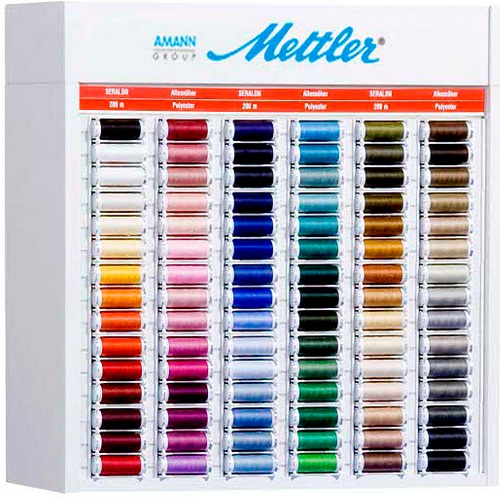
Threads from this manufacturer can be both for overlock and universal, i.e. Suitable for any sewing machine.
If you intend to sew a little or use simple fabrics, more will go budget options "Gamma" or "Ideal". With their help, the list of execution of the overlock stitch is limited, not more than 3 threads, but for many products it is quite enough.
Different over color can be used for the overlock, but their size and structure should match. The combination of thick and thin thread types will cause problems with the tensioner of the device, the seam will turn out to be a curve. Very comfortable transparent threads - they merge with the color of the product and the overlap becomes practically invisible. On the contrary, when the seam is not hidden, using the color and structure of the fiber it can be distinguished on the open elements of clothing.
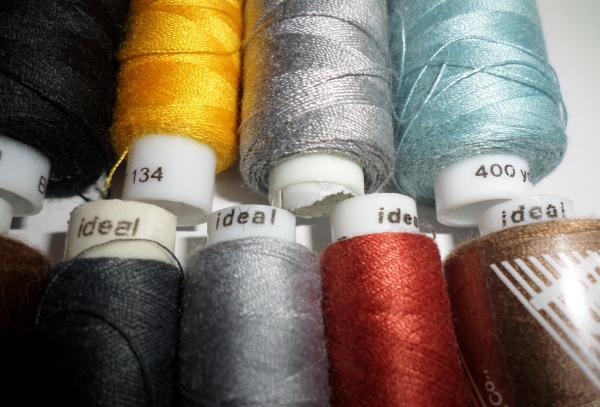
Prohibited threads for overlock stitch
Spontaneity in the choice of threads for sewing can lead to damage to the product and cause overlock failure. Consider the most undesirable options for improvised material.
- Not recommended for use old cotton yarn - they are definitely not suitable for modern devices. The seam will be uneven, during the line the thread will tear during any tension, and during wear or after washing it will shake.
- Will not fit reinforced coilwith the designation LL and LH.Their regular use contributes to the rapid wear of the overlock.
- Industrial threads are desirable to use only as intended.
- Do not use tensile thread.
To achieve a good result in sewing the threads for the overlock, you must select elastic and thin. To obtain a decorated overlay stitch, you can make a combination of different threads, while respecting their equality in thickness. Observing small nuances, the process of creating a product will be fun, inspiring new fashionable masterpieces.

/rating_off.png)






